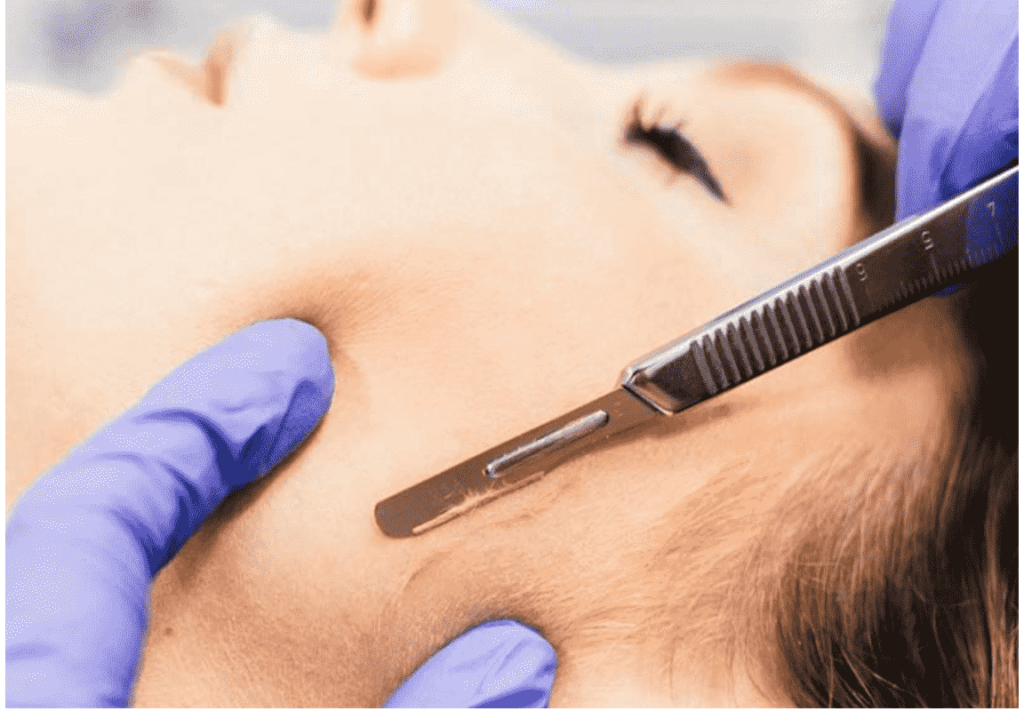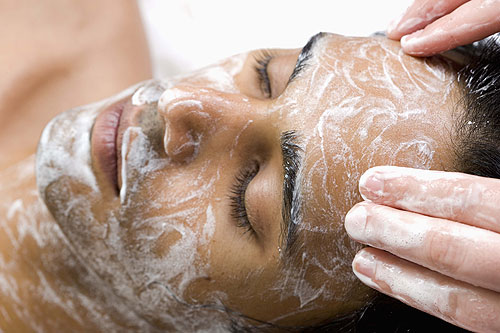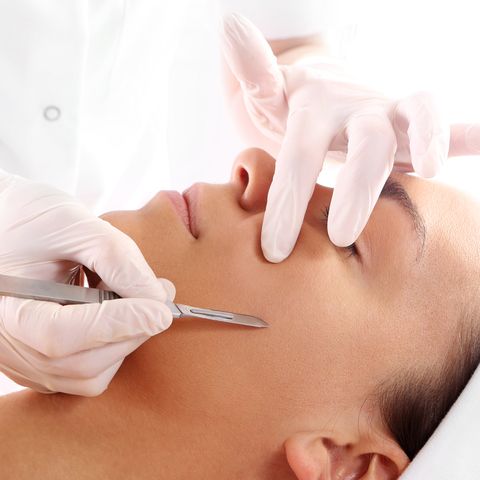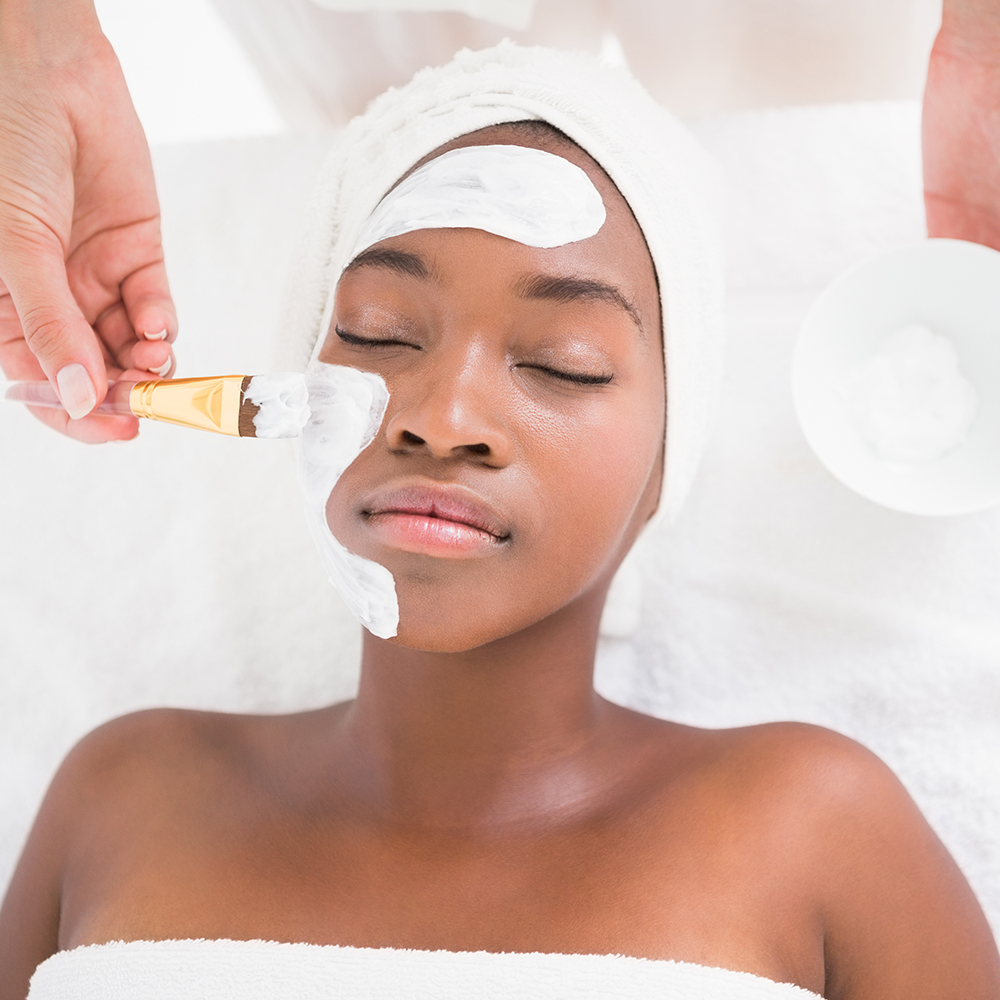As a skin care and beauty enthusiast, I always want to be on top of new trends and understand what is happening the industry at any given time. Now there have been products and procedures that I personally don’t believe in but like I always say to my clients and collegues, everything has its place, time and purpose; not everything is good for everyone.
To be completely honest one of the procedures/tools that I never gave a fair shot was Dermaplaning. Like others, I have ever only heard of the negative side of Dermaplaning; I have heard of horror stories from clients who have tried it else where and it destroyed their skin. I have also heard that people can use them at home (which sounds dangerous to begin with) and people have caused more damage than good. But during my time in quarantine, I have done some more indepth research and speaking with other individuals in the industry, I understand Dermaplaning much better.
What Is Dermaplaning?
Dermaplaning is a skin treatment that uses a surgical blade to gently remove dead skin cells and velous hair from the face. The purpose of Dermaplaning is to make the skin’s surface smooth, youthful, and brighter. This treatment aids to reduce scarring, hyperpigmentation and fine lines and wrinkles. Dermaplaning is suitable for all skin types and can treat various skin concerns, such as sun damage and remove dead skin safely and effectively.
How Does Dermaplaning Work?
Dermaplaning uses a surgical blade, held at an angle and is gently placed on the skin in a quick short stroke motion. Another way of explaining this treatment is by aiming a sterile blade at a 45-degree angle and dragging it slowly across the skin, dead skin cells, scar tissue, and other debris is gently removed. Another positive of Dermaplaning treatments is that it can safely remove velous or peach fuzz hair.
FYI – Velous hair: this is hair that has no colour, it is very fine, very light and cannot be treated with Laser Hair Removal treatments.
The Treatment
Dermaplaning is a simple treatment and can be incorporated as a full-service skin treatment. Dermaplaning being the exfoliating part of the skin treatment. Dermaplaning itself takes approximately fifteen to twenty minutes depending on the client’s sensitivity. Though there is no true down time in Dermaplaning treatments, the skin can be slightly pink and sensitive in the following days after the treatment. With proper maintenance, the effects of Dermaplaning can last up to one month.


The Difference Between Dermaplaning & Microdermabrasion
Now as some of you may know, I love my Microdermabrasion treatments; it’s a great treatment with amazing results. Though both Dermaplaning and Microdermabrasion treatments provide similar results in exfoliating and antiaging, they do them differently which is why a combination of both treatments will provide the best overall results. Microdermabrasion uses a suction/vacuum method to stimulate cell renewal and removing dead skin cells. Dermaplaning uses a scalpel blade to gently scrape off dead skin and reveal healthy new skin.
Am I A Good Candidate For Dermaplaning?
Clients who are good candidates for Dermaplaning have concerns with scarring, hyperpigmentation, uneven skin and fine lines and wrinkles. While it is safe for all skin types, there are some clients who are not good candidates. Clients who have active acne, mild to moderate rosacea, and inflamed skin are not the best candidates for Dermaplaning as it may worsen the skin instead of making it better.
Can Dermaplaning Cause My Skin To Get Worse?
Simply put: No. Because Dermaplaning is working on the outer layers of the skin it does not irritate the skin or stimulate breakouts. A buildup of dead skin can clog pores and hair follicles, which can not only cause pimples but also block your skincare products from penetrating the skin, which is why exfoliation is essential for maintaining an even, healthy glow. The skin is fresh immediately after Dermaplaning, when done correctly, the skin is healthier and brighter.


Does Dermaplaning Hurt?
Now I know that the sound of a scalpel being dragged across the face can sound scary, but it’s actually not. The treatment itself is comfortable and satisfying to see and feel the smoothness of the skin after Dermaplaning.
Does Dermaplaning Cause My Skin To Be More Sensitive?
No, the purpose of Dermaplaning is to remove dead skin, not healthy skin. Having a clear, clean canvas allows for better skin care product penetration as well as the perfect application for makeup. Remember, if you already have sensitive skin, Dermaplaning is not the best treatment for you.
How Often Do I Need Dermaplaning?
The cycle of skin cells is approximately three to four weeks, what this means is that exfoliation like Dermaplaning can be done once a month for optimal results.
Can I Do Dermaplaning At Home?
My answer: a hard No! Though I am for taking care of your skin at home; there are certain things that need to be left to the professionals and Dermaplaning is one of them. A blade in the hands of a client that doesn’t know how to use it properly can aggravate the skin and cause scarring from improper use. My advice, leave the pro treatments to the pros.
Final Thoughts
Though I wasn’t a fan of Dermaplaning in the beginning, I definitely am now. I have been obsessively watching videos online watching professionals perform this treatment and it’s so satisfying! It will be a great addition to what my clients are experiencing now as far as their skin care and skin care products. I love the results from it and cannot wait to share this treatment with all my clients.